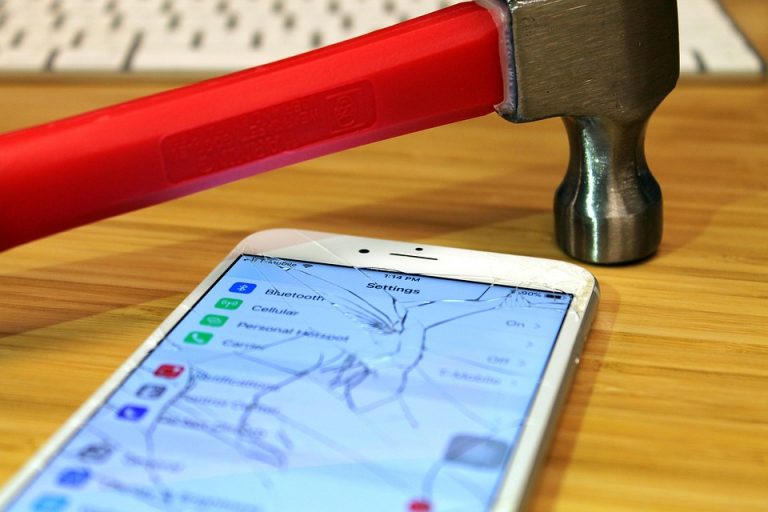Did you know that, according to a 2022 report by Verizon, 82% of data breaches involve a human element? That’s right; even the most advanced technology can’t protect you if your security settings are lackluster. With the iPhone 14 packed with features, it’s crucial to ensure your device is as secure as it can be. Let’s dive into seven actionable steps you can take to strengthen your iPhone 14 security settings, keeping your personal data safe from prying eyes.
Contents
1. Enable Face ID or Touch ID
Why It Matters
Facial recognition and fingerprint scanning are not just flashy features; they add a robust layer of security to your device. By using Face ID or Touch ID, you ensure that only you can access your phone, making it significantly harder for anyone else to snoop around.
How to Set It Up
- Face ID: Go to Settings > Face ID & Passcode. Follow the prompts to set up your face.
- Touch ID: Navigate to Settings > Touch ID & Passcode, and add your fingerprint.
Pros and Cons
- Pros: Quick access, secure authentication.
- Cons: May not work well in low light for Face ID; Touch ID can struggle with wet fingers.
2. Use a Strong Passcode
The Importance of a Strong Passcode
Let’s face it: using “123456” as your passcode is an open invitation for trouble. A strong passcode is your first line of defense against unauthorized access.
Tips for Creating a Strong Passcode
- Use at least six digits.
- Incorporate a mix of numbers and letters (alphanumeric).
- Avoid using easily guessable information like birthdays.
How to Change Your Passcode
Go to Settings > Face ID & Passcode (or Touch ID & Passcode), then tap Change Passcode.
Caveat
Remember, a strong passcode can be a double-edged sword. If you forget it, you may lock yourself out of your device.
3. Keep iOS Updated
Why Updates Matter
Apple consistently rolls out updates to patch security vulnerabilities. Delaying these updates can leave your device exposed.
How to Enable Automatic Updates
Go to Settings > General > Software Update and enable Automatic Updates. This way, you won’t have to worry about missing critical security patches.
Pros and Cons
- Pros: Automatic security fixes, improved performance.
- Cons: Updates may occasionally introduce bugs or change familiar features.
4. Manage App Permissions
The Hidden Risks
Every app you install wants access to something—your camera, location, or contacts. If you’re not careful, you could be giving away more than you realize.
How to Review App Permissions
- Head to Settings > Privacy & Security.
- Review each category (like Location Services) and adjust permissions for each app.
Pros and Cons
- Pros: Enhanced privacy, control over personal data.
- Cons: Some apps may not function correctly without permissions, which can be frustrating.
5. Turn on Find My iPhone
Why It’s Essential
Find My iPhone is a lifesaver if your device gets lost or stolen. Not only can you locate your phone, but you can also remotely wipe it to prevent data theft.
How to Enable It
Go to Settings > [your name] > Find My > Find My iPhone and toggle it on.
Pros and Cons
- Pros: Peace of mind, remote data management.
- Cons: If someone else has your Apple ID, they could potentially track your device too.
6. Enable Two-Factor Authentication (2FA)
The Extra Layer of Security
2FA adds another step to your login process. Even if someone gets your password, they’ll need an additional code sent to your device to access your account.
How to Set It Up
- Go to Settings > [your name] > Password & Security and turn on Two-Factor Authentication.
Pros and Cons
- Pros: Significantly increases account security.
- Cons: Can be inconvenient if you frequently switch devices.
7. Be Wary of Public Wi-Fi
The Dangers of Free Wi-Fi
Public Wi-Fi networks can be a hacker’s playground. If you connect without precautions, you risk exposing sensitive information.
How to Stay Safe
- Avoid accessing sensitive sites (like banking) on public Wi-Fi.
- Use a VPN (Virtual Private Network) for an extra layer of security.
Pros and Cons
- Pros: Better security when browsing.
- Cons: VPNs may slow down your internet speed.
FAQs
1. Can I use both Face ID and a passcode?
Yes! Face ID is an additional security layer, but a strong passcode is still essential.
2. What should I do if I forget my passcode?
You will need to reset your iPhone through iTunes or Finder, which will erase all data.
3. Is it safe to use public Wi-Fi with my iPhone?
While it’s possible, it’s risky. Always use a VPN if you must connect to public Wi-Fi.
4. How often should I update my iPhone?
As soon as updates are available. Regular updates help protect against newly discovered vulnerabilities.
Conclusion
In today’s digital age, taking control of your iPhone 14 security settings is non-negotiable. By following these seven steps, you’re not just safeguarding your device; you’re also protecting your personal data and privacy. Remember, it’s not just about having the latest technology; it’s about using that technology wisely. So, take these actionable steps, and rest a bit easier knowing your iPhone is fortified against potential threats.
References
- Verizon. (2022). 2022 Data Breach Investigations Report. Verizon
- Apple. (2023). How to use Two-Factor Authentication for your Apple ID. Apple Support
- TechCrunch. (2023). Why You Should Always Update Your iPhone. TechCrunch








